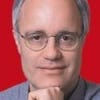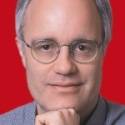IDF: Edison Leads Intel Into WearablesIDF: Edison Leads Intel Into Wearables
Postage-stamp sized chip aims to power the consumer Internet of Things.

Intel's New Devices group had its coming out party on the first day of the Intel Developer Forum. The current star of the year-old group is Edison, a wireless PC the size of a large postage stamp that is the first of what the new group hopes are many platforms for the consumer Internet of Things.
Intel gave attendees the $50 module and a development board for free. It hopes the Maker movement of amateur tinkerers and engineer hobbyists sparks enthusiasm for the x86 in emerging consumer IoT markets.
The current Edison is an upgrade from the initial concept which Intel first announced in January at CES. At that time, Intel said it was based on Quark, a new Pentium-class processor for IoT that, strangely, Intel rarely mentioned at IDF. Early testers said the initial Quark processor and single-antenna 802.11g wireless link in Edison were too slow.
So the current version officially released Tuesday sports a version of Intel's 22nm Merrifield smartphone processor. It includes two 500-MHz dual-threaded Silvermont-class Atom cores and an older Lakemont-class core that acts as a sensor hub, scrubbing noise from accelerometers and other sensors. It now includes a Broadcom 11n Wi-Fi chip with dual antennas.
The module now supports Linux. Intel ships Edison with a version of its Yocto distribution, originally targeting servers. The code which some developers got just weeks ago is still buggy, some say.
Read the rest of this story on EE Times.
About the Author
You May Also Like






